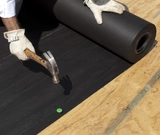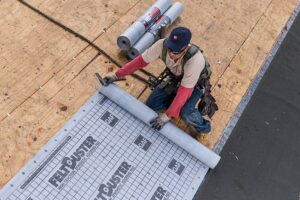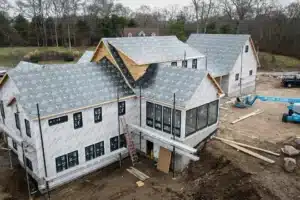When it comes to protecting your home, your roof plays the most crucial role. But what many homeowners don’t realize is that what lies beneath the shingles is just as important. Roofing underlayment is the hidden layer that acts as a critical moisture barrier and adds an extra line of defense against the elements. At Shepherd Roofing & Renovations, we educate our clients on the full scope of their roofing systems—and that includes understanding the types of underlayment available and which might be best for your home.
What Is Roofing Underlayment?
Roofing underlayment is a water-resistant or waterproof barrier material installed directly onto your roof deck, underneath the shingles or metal panels. It provides a second layer of protection from wind-driven rain, snow, and ice that may penetrate your outer roofing layer. In short, it’s your roof’s backup plan—and it’s essential.
There are three primary types of roofing underlayment commonly used today:
1. Asphalt-Saturated Felt (Traditional Felt Paper)

Also Known As:
- Tar paper
- Felt paper
Description:
This is the traditional choice for roofing underlayment and is made from a blend of asphalt and either organic or fiberglass substrates. It comes in two standard weights: 15 lb and 30 lb—with the latter offering more durability and resistance.
Pros:
- Cost-effective
- Easy to install
- Readily available
Cons:
- Less durable than modern alternatives
- Can tear in high winds during installation
- Prone to absorbing moisture over time
Best Use:
Budget-conscious homeowners or those replacing a roof on a home with a lower pitch may still opt for felt underlayment, although more advanced materials are gradually replacing it.
2. Synthetic Underlayment

Description:
Synthetic underlayment is made from polypropylene or polyethylene plastic fibers and is quickly becoming the industry standard due to its superior performance and durability.
Pros:
- Lightweight and easy to handle
- Resistant to tearing and UV exposure
- Moisture-repellent and fast-drying
- Offers superior traction for installers (safer during application)
Cons:
- Slightly more expensive than felt
- Not all synthetics are created equal—quality varies between brands
Best Use:
Homeowners looking for a long-lasting, weather-resistant solution. Especially recommended for areas with high wind and rain—like North Texas during storm season.
3. Rubberized Asphalt (Peel-and-Stick / Ice & Water Shield)

Description:
Rubberized asphalt underlayment is a premium, high-performance waterproof material. It contains a higher percentage of asphalt and features a self-adhesive backing that forms a watertight seal around nails, fasteners, and roof penetrations.
Why We Recommend It:
At Shepherd Roofing & Renovations, this is our preferred underlayment choice—especially in areas prone to leaks or severe weather. We have extensive experience installing peel-and-stick underlayment with precision, ensuring it’s applied exactly where your home needs the most protection. Our team is well-versed in the details that make the difference—like proper edge alignment, flashing integration, and sealing around valleys and chimneys.
Pros:
- Fully waterproof and ideal for storm-prone regions
- Self-seals around nails to prevent water intrusion
- Offers excellent protection against ice dams, wind-driven rain, and standing water
- Enhances the longevity and resilience of your entire roofing system
Cons:
- Higher initial cost compared to felt or basic synthetics
- Requires skilled installation to maximize its benefits (which we provide!)
Best Use:We strongly recommend rubberized asphalt underlayment for vulnerable areas such as roof valleys, chimneys, eaves, and low-slope sections. In fact, we incorporate Ice & Water Shield as part of our standard best practices in every roof replacement to ensure your home is storm-ready and watertight.
Choosing the Right Underlayment for Your Roof
The right underlayment depends on various factors, including:
- Roof pitch
- Local weather conditions
- Type of roof covering
- Budget
- Desired longevity of the roofing system
At Shepherd Roofing & Renovations, we typically recommend synthetic underlayment for most modern roofing projects due to its durability and overall performance. However, in many installations, we also integrate peel-and-stick underlayment in vulnerable areas for added protection.
While your shingles are the visible star of the show, your underlayment is the quiet hero working behind the scenes. Whether you’re planning a full roof replacement or just looking to better understand your home’s construction, knowing the differences between roofing underlayment types is key to making informed decisions.
If you’re in North Texas and unsure which underlayment is right for your roof, give us a call at Shepherd Roofing & Renovations. We’ll walk you through your options and help ensure your home is equipped with the protection it deserves—top to bottom.
📞 Need a roof inspection or replacement? Contact us today for a free consultation here. We’re proud to help homeowners across DFW and East Texas make smart, secure, and storm-ready roofing decisions.

